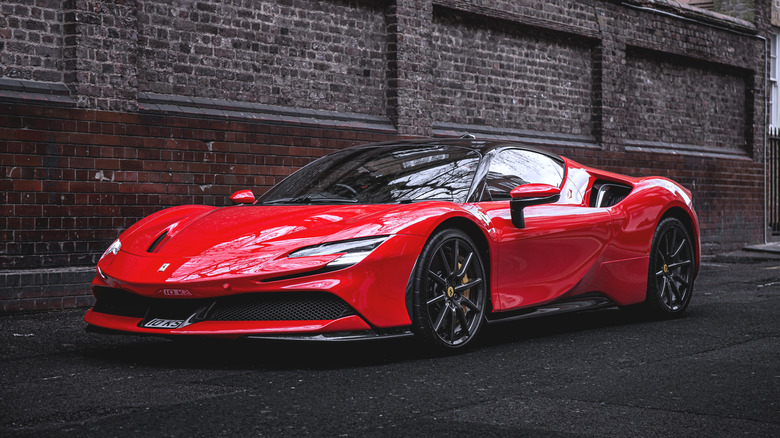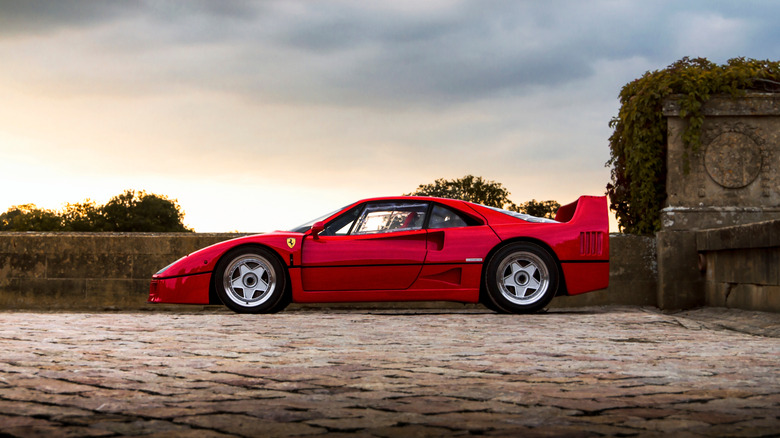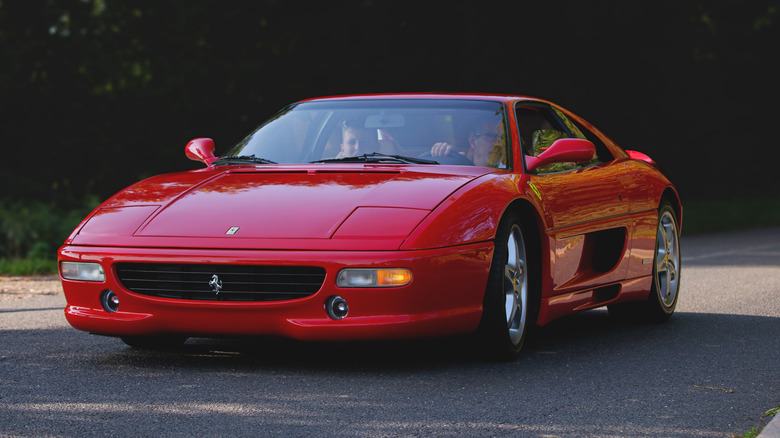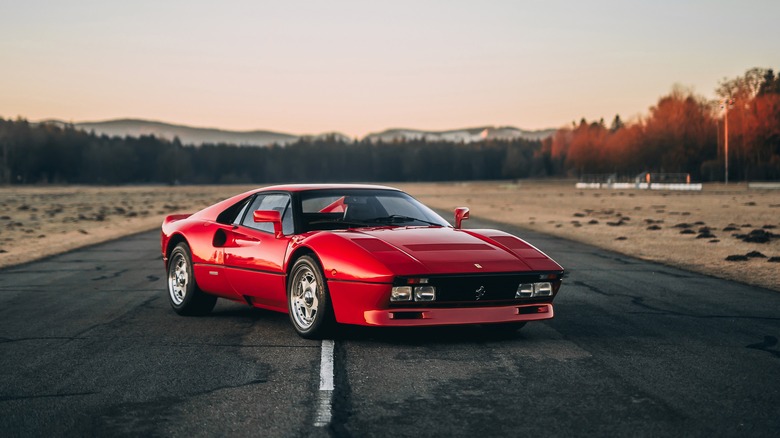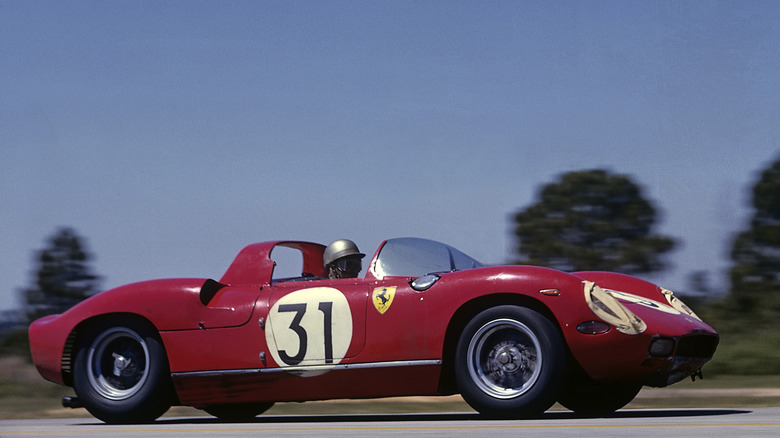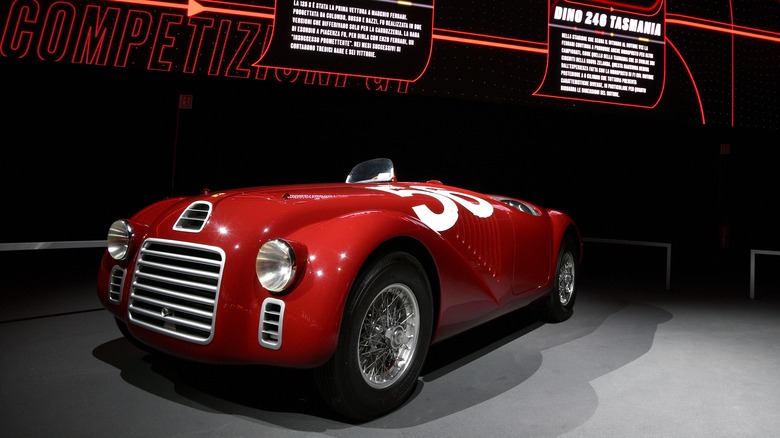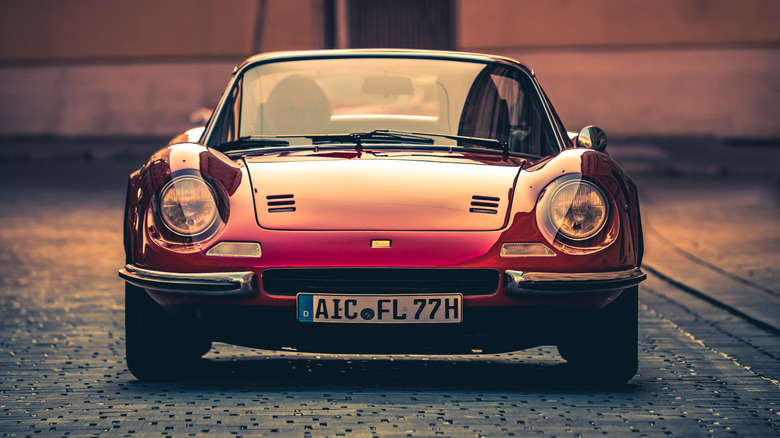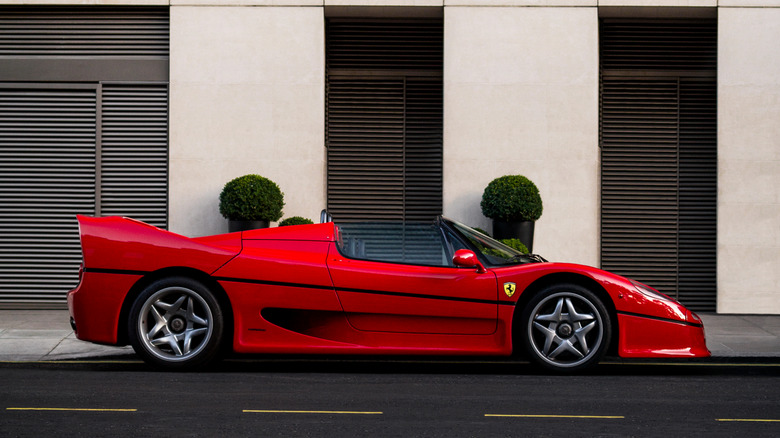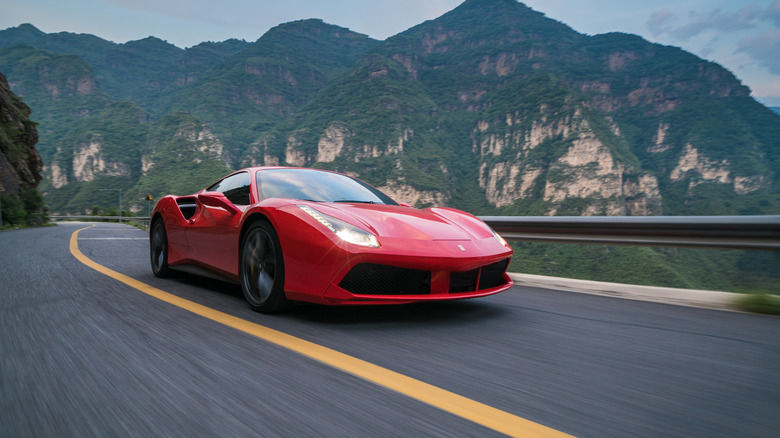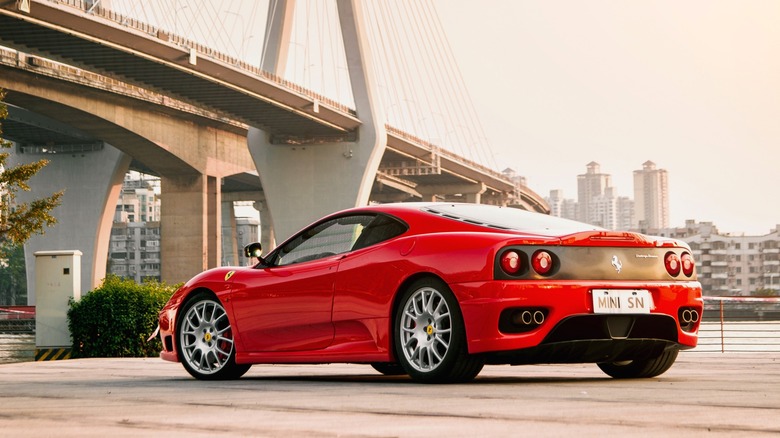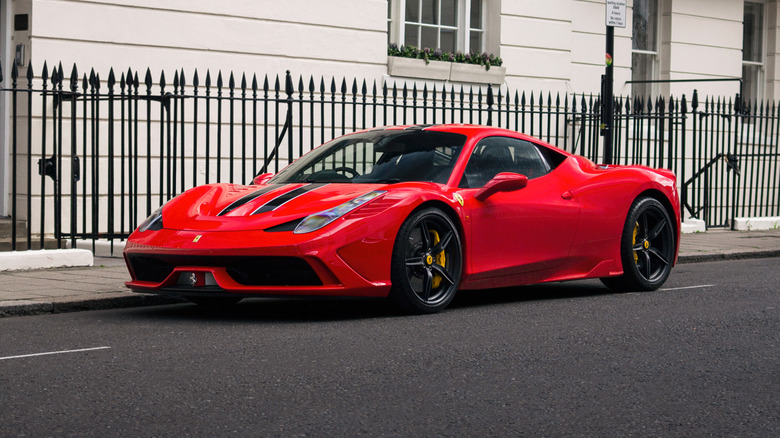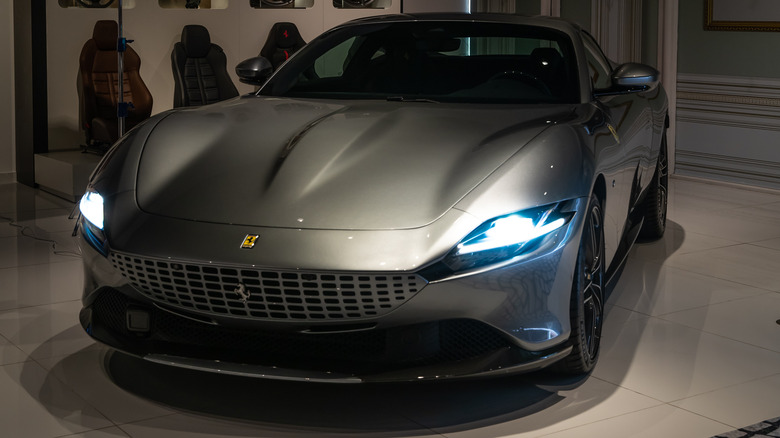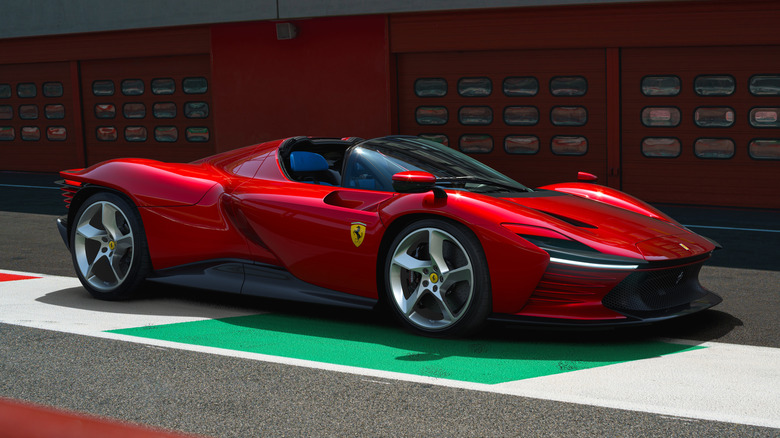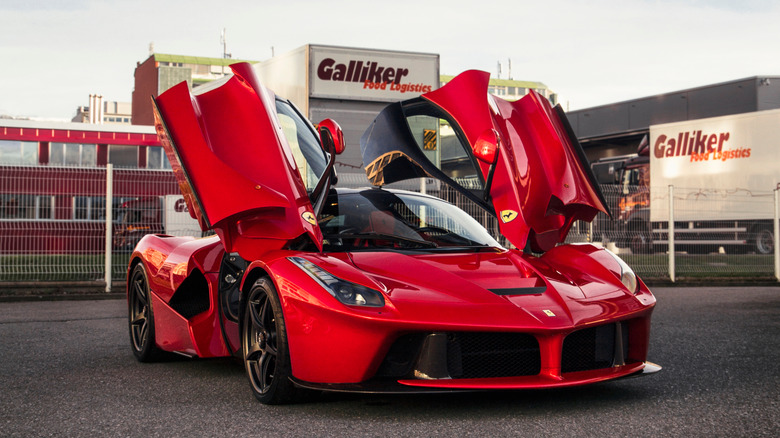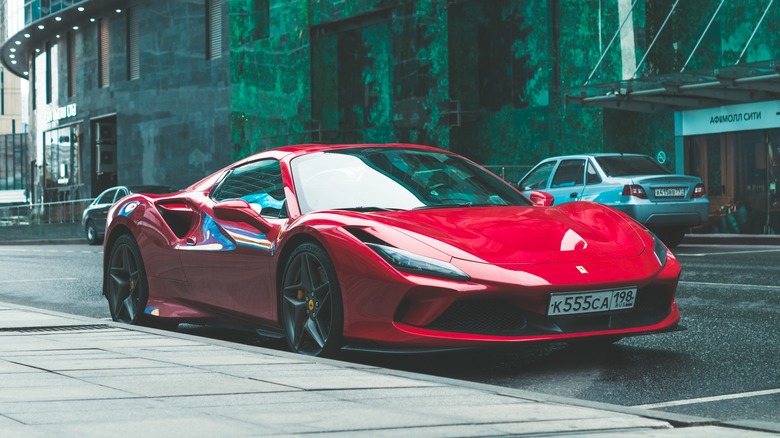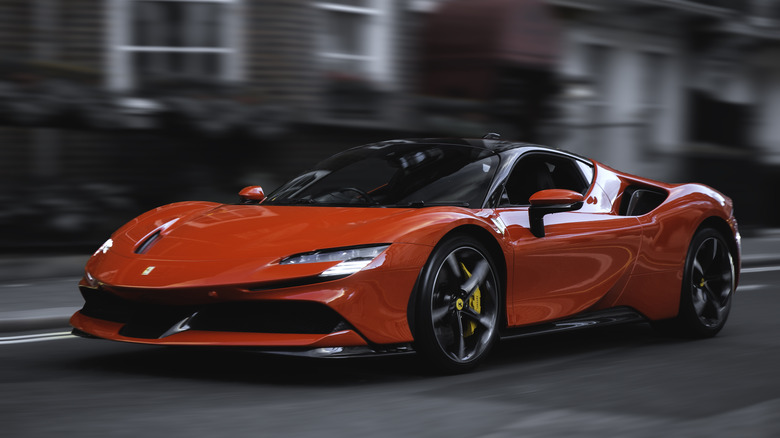15 Best Ferraris Of All Time
Regarded as one of the biggest companies when it comes to high-performing luxury sports cars, Ferrari has been a key player in the industry for more than half a century. Founded in 1939 by the legendary automobile enthusiast Enzo Ferrari, the company started producing cars the very next year but it was not until 1947 that the company launched its first Ferrari-badged car. Interestingly, Enzo Ferrari had been working in the automobile industry since before Ferrari's inception. He initially started out his career at Alfa Romeo as one of the race car drivers and even won medals for Alfa Romeo's racing division. in 1929, Enzo founded the famous Scuderia Ferrari which was the official racing division of Ferrari but was still under the umbrella of Alfa Romeo as a unit that specialized in developing race cars for gentlemen.
Enzo continued to work for Alfa Romeo until 1939, after which he exited the company to form one of his own, Auto Costruzioni Ferrari. During the initial days of Ferrari, Enzo led the development of the famous V12 engine which eventually became the brand's signature and in 1947, the company rolled out its first production car called the 125 Sports (via Ferrari). Since then, Ferrari's journey has been nothing short of a legendary story. The cars produced by the Italian giant are admired as hallmarks of the industry. Below are the 15 best Ferraris of all time — vehicles that have changed the standard of sports cars throughout.
Ferrari F40
When Porsche unveiled the 959 in 1986, it commanded the attention of the entire automobile sector. It wasn't until the following year that Ferrari finally unveiled the F40 touted as a race car for the road. The F40 was created to mark the company's 40th anniversary. It had a stripped-down interior that gave passengers the impression they were riding in a Le Man's prototype, thanks to its extensive use of composite materials. An aggressive and low-slung design has made the F40 Ferrari's most identifiable model.
The 288 GTO's V8 was reworked into a 3.0-liter version by experts. Instead of 390 horsepower, there were 478, which was more than enough for an automobile weighing only 2,425 pounds. "So quick it'll make you spit your trousers out," Enzo Ferrari reportedly said of the F40 (via Ferrari).
Even though the F40 retains some 308 aesthetic cues, the body is mostly composed of composite panels resting on a steel tube frame. The F40 was named in honor of Ferrari's 40th anniversary (the 40 in F40) and became an instant icon of performance in the 1980s, paving the way for the likes of the F50, Enzo, and LaFerrari. The F40 revolutionized Ferrari.
Ferrari F355
The F355 was Ferrari's entry-level supercar, following the 308, 328, and 348 as a less expensive alternative to their V12 versions. Ferrari President Luca di Montezemolo challenged Ferrari's design, engineering, and marketing departments to come up with something fresh, thrilling, and radically different from the 348.
The F355 was a huge success: its whole body undertray was emphasized as a performance standard upon debut, and orders poured in quicker than Ferrari could satisfy them. The 25 percent boost in horsepower, as well as Pininfarina's elegant style, were widely praised by the press. There were two models of F355: the Berlinetta coupe and the GTS with the detachable metal top, which could be stored in the car's front trunk. Flat-plane crank V8s were used in all F355s, positioned longitudinally in the middle of the vehicle.
With 380bhp at 8250rpm and a displacement of 3496cc, it was one of the most powerful naturally aspirated engines on the market. New five-valve cylinder heads and lighter engine components like titanium connecting rods and forged alloy pistons allowed this to be accomplished.A major goal of the 348's engineers was to enhance the car's grip at the limit of adhesion, and this was one area where the Ferraris excelled. New electronic dampers were installed, calculating the vehicle's speed, braking pressure, suspension load, and steering input. The F355 was seven seconds quicker around the Fiorano test track than the earlier 348 because of improved suspension and greater available power.
Ferrari 288GTO
For the first time, in 1984, Ferrari built a street-legal automobile that was both beautiful and rough. The car's nick nanme: Gran Turismo Omologata was etched in Ferrari history alongside the Testarossa's. 1962-64 250 GTO is one of the most sought-after Ferraris.
GT sports car racing in the golden period was a notable triumph for this model. To hit 60 mph in less than five seconds and achieve a conservatively estimated high speed of 189 mph, the 1984 GTO had a 400-horsepower (140 bhp per liter) twin-turbocharged V8 engine. Although it seems to be a progression of the Berlinetta Boxer and the 308 in style, the GTO is, in fact, a completely new design. Indeed, it was an entirely distinct vehicle, with little resemblance to the two pure streetcars in terms of size or weight (via Ferrari).
The GTO, had its little V8 positioned longitudinally behind the cabin, making the transaxle visible to anybody standing behind the car's rear bumper. Front air dam with massive lights capable of lighting a dusty, rainy, or dark racecourse; high-mounted side mirrors to give driver clear view over and around the large wheel blisters; and a highly aggressive Kamm tail suggestive of stability at extremely high speed were among the most noticeable styling details. The car's purpose and capabilities were accurately conveyed via these visual cues. Although it lacks the advanced undertray design and aerodynamic finesse of later Ferraris, this is a vehicle engineered for stability up to its maximum speed.
Ferrari 250P
The 250 P was the first of a series of Ferrari Prototype-class sporting Ferraris equipped with mid-mounted V12 engines, introduced in 1963. The P-car program was completed in 1967 with the 330 P4 before a three-liter engine restriction was set in 1968 and rendered them obsolete.
During 1961 and 1962, Scuderia Ferrari successfully raced SP versions with mid-engines. However, these early vehicles were powered by V6 and V8 engines. It was thought that the final front V12-engined Testa Rossa (the unique 330 TRI/LM) would still be the quickest vehicle at high-speed races like Le Mans. Ferrari built the ideal Prototype racing vehicle of its day by combining the mid-engined layout with its strongest competitive V12 engine, and the result was the 250 P.
In order to create a semi-monocoque chassis, the 250 P's brand-new Tipo 564 tubular steel chassis had strained aluminum sheets welded in place. The vehicle's wheelbase was 2,400 millimeters. Compared to the front, the rear track was 10 millimeters shorter. Double wishbones, coil springs, telescopic dampers, and anti-roll bars were used to provide independent suspension for all four corners of the vehicle. Each sill was fitted with a 65-liter gasoline tank, resulting in a total capacity of 130 liters. Four-wheel disc brakes from Dunlop were used. All of them were positioned inboard of each other. The front wheels were 5.5 inches wide, while the rear wheels were seven inches wide, both supplied by Borrani and fitted with Dunlop Racing tires (via Ferrari).
Ferrari 125 S
Ferrari's first racing vehicle didn't appear until almost two decades after Enzo started the Scuderia Ferrari in 1929. Enzo Ferrari formed Auto Avio Costruzioni in 1939 after leaving Alfa Romeo and heading up the company's racing section. He had previously prepared and fielded Alfa Romeo race cars for amateur drivers. However, because of the Second World War, the Tipo 815 racing car encountered minimal competition when it was first introduced in 1940 by the newly formed corporation. The Allies attacked Ferrari's plant in 1944 during the war. During the Second World War, the Scuderia restored it and started developing the 125 S, the first Ferrari model (via Ferrari).
The 125 S was created from scratch over the course of two years and was powered by a naturally aspirated V-12 engine. In all, Ferrari produced just two automobiles. A traditional sports car body adorned Chassis 01C, popularly referred to as the Piacenza roadster, competed in several races in 1947. The second model, chassis 02C, included fenders for bicycles and a revised body design. One of the most popular models is the 01C.
The 125 S had a brief but eventful existence. Ferrari's first year in business saw chassis 01C participate in 13 events, while chassis 02C competed in only six. Larger engines and new bodywork were added to both chassis in the future. In 2006, Ferrari's own Classiche program repaired the 01C and showed it at the Pebble Beach Concours d'Elegance with a Piacenza roadster body, the brand noted.
Ferrari Dino 246
Dino 246 GT is a Ferrari that was never marketed as one since it was a "Dino," which meant it was a sub-V12 vehicle. It was also named after Enzo's son, who died of muscular dystrophy at the tender age of 24. However, without any of that context, the Dino might easily stand alone. After being pushed in this direction by his design colleague Pininfarina (who also created Dino's beautiful lines), even the hesitant Enzo Ferrari couldn't stop the trend that gave birth to the 246 GT. The 206 was the 246 GT's immediate predecessor. As a result, it was also the first Ferrari to run on less than twelve cylinders (via Ferrari).
When it comes to Dino's history, the 246 GT has a sweet-sounding V6 that was developed with Vittorio Jano, the legendary engineer who worked with Dino before he went away. The 246 GT's 195-horsepower 2.4-liter engine is a lot more powerful than most other Ferraris because of its size and weight.
The 246 GT, on the other hand, is best experienced in vigorous driving when the mid-engine layout demonstrates its excellent handling abilities. For Enzo to alter his mind about the 246 GT's layout, and even to name it after his beloved son, you don't have to look too far.
Ferrari F50
The Ferrari F50 replaced the 1987-1992 Ferrari F40 in 1995 and was superseded by the Enzo Ferrari in 2002 and the LaFerrari in 2013 as part of Ferrari's limited-production supercar series (via Ferrari). For the Ferrari F50, the road vehicle is called a Barchetta (after the Italian word for roadster) while the race car is called a Berlinetta (after the Italian word for the coupe).
The F50 GT, a racing prototype based on the F50, was designed by Ferrari to participate in GT1-class racing. A new front spoiler, a larger rear spoiler, and a fixed roof were among the various modifications. The 750 horsepower target was set on the 4.7-liter V12 engine (559 kW). F50 GT performance testing in 1996 showed that it could outperform its predecessor by more than two seconds, but Ferrari canceled the project and instead concentrated on Formula One racing. Ferrari made a tidy profit on the three test vehicles it manufactured -– 001, 002, and 003. The bodywork was completed on chassis 002 and 003 prior to sale.
The F50's Tipo 040-derived 4.7-liter naturally aspirated V12 cranks out 513 horsepower (383 kW) and 347 pounds-feet (470 N-meters) of torque at 8,000 revolutions per minute. The car can go from zero to 60mph (97km/h) in a little over three seconds, with a peak speed of 325mph (via MotorTrend).
Ferrari 488 GTB
This mid-engine supercar from Ferrari, which takes the place of the much-loved Ferrari 458, is another spectacular mid-engine supercar from the Italian company that continues to be at the pinnacle of automotive desirableness. With 661 horsepower from a 3.9-liter twin-turbocharged V8, the 488 GTB's heart captures the eye as well as the attention of onlookers. It's hard to believe that a 0-62 mph acceleration time of only three seconds and a quarter-mile pace of 10.45 seconds could be bettered by the 458's naturally-aspirated engine, which is even more potent in the mid-range (via Ferrari).
Exotic materials and laser-like attention on the driver characterize the GTB's cabin and its customary array of aerodynamic trickery. With the addition of turbocharging, Ferrari's 488 GTB remains a pure, spine-tingling driving machine despite being even faster than before. While the 488 succeeded the 458 in 2016, it was not a fully new vehicle. A revised version of the 458 was introduced that increased downforce by 50% and replaced the naturally aspirated 4.5-liter V8 engine with a 3.9-liter twin-turbocharged unit with a capacity of 488 cubic centimeters per cylinder — hence the designation 488, Ferrari noted. This was Ferrari's first turbocharged V8 since the Ferrari F40. It was derived from the F154 V8 engine family.
Ferrari 360 Challenge Stradale
The Challenge Stradale has only a few minor variations from other 360s exteriors but never let the Challenge Stradale's looks deceive you; this model has been extensively improved to include only the most effective performance upgrades. Increased power and weight loss are mostly responsible for dramatic performance improvements. A titanium and carbon fiber diet resulted in a 243 lb (110 kg) weight loss for the Ferrari 360. The company's engineers fine-tune Ferrari's 3.6-liter V8 engine to extract more significant power. High-compression combustion chambers, polished ports, and a wider intake tract contribute to increased horsepower. Using a valve, the dual-flow exhaust attached here can circumvent much of the sound deadening, resulting in a deafening cacophony. Stradales are known for their piercing screams (via Ferrari).
On all Stradale models, the six-speed semi-automatic transmission is standard equipment. The onboard computer, which is largely hidden from view from the cockpit, is required to make this system work. The Stradale may be set to either sport or race mode to retain different comfort levels. While the shift time is halved to 150 milliseconds in race mode, the shifts are less smooth and more uneven. The Stradale has firmer titanium springs, making it slower than the 360s. The damping is adjustable and adjusts depending on the driving mode being used. The amount of traction control, which can be turned off, is also adjustable. Faster and lighter than ever before, the Stradale hits 60mph in 4.1 seconds, stops with Enzos carbon brakes, and can shift gears in just 150 milliseconds, all while weighing less than the previous model, according to Ferrari.
Ferrari 458 Speciale
The Speciale pushes the 458 into new, more extreme territory, following in the footsteps of Ferrari's 360 Challenge Stradale and 430 Scuderia. Just like its iconic predecessors, it also has a central stripe. The 14:1 compression ratio on the 4.5-liter V8 engine results in 133 bhp per liter of power at 9000 pm (via Ferrari). Carbon fiber underbody, narrower windscreen and side windows, Lexan engine cover, new lighter ceramic brakes, forged wheels, and a deliciously simple interior contribute to the vehicle's increased performance while reducing its weight by 90 kilograms (200 pounds).
Compared to the 458 Italia, there are also magnetic dampers, stiffer springs, and anti-roll bars. The logic of downshifting gears is also altered, resulting in a 44% reduction in engine speed matching the gear ratio. Additionally, active aerodynamics and high silicon content ceramic discs reduce drag as speed increases. Ferrari claims that this car is a completely new model, not a version of the 458 Italia. With the Side Slip Angle Control (SSC) system, even novice drivers can test the Speciale's limits while still receiving some help if they go too far. It's a win-win situation for everyone.
Ferrari Roma
A grand-touring car is generally thought of as a coupe with two or four seats with plenty of performance, though perhaps not as much as a true sports car. It was initially intended as a reasonably comfortable, fun-to-drive vehicle that could blow through some touring miles in style. The Roma is the GT torchbearer in the Ferrari lineup, and it fills that role with ease (via Ferrari).
The 2022 Ferrari Roma is a sleek and sexy coupe with four seats, though those tiny four seats are better suited to holding cargo overflow than actual passengers. Under the hood is a 611-horsepower V8 engine that should more than satisfy most drivers. The Roma likely has the performance part of the equation covered with impressive handling, the brand notes.
As far as technology and convenience go, the Roma could use some help. The small infotainment screen is difficult to read and operate when moving, and many tech features, including Apple CarPlay, are optional add-ons. This is a Ferrari, and most people are looking at the Roma with more of an emotional filter than a pragmatic one, and we're well aware that changing their minds would be an uphill battle.
Ferrari Daytona SP3
Limited-edition Ferrari Daytona SP3 was unveiled at the Mugello Circuit during the 2021 Ferrari Finali Mondiali and joined the Icona series that debuted in 2018 with the Ferrari Monza SP1. Contrasting surfaces and sharper lines are found in the Ferrari Daytona SP3 to reveal the importance of aerodynamics in the design of racers such as the 330 P4, 350 Can-Am, and 512 S, which were all built in the late 1960s. The Daytona SP3 is based on the advanced engineering solutions that were already in use in racing in the 1960s: today and then, maximum performance was achieved by working on the aforementioned three fundamental areas of improvement. It features a 'Targa-style' body with a removable hardtop, which provides both exhilarating driving pleasure and usable performance (via Ferrari).
Under the hood of the Daytona SP3 lies a 6.5-liter naturally aspirated Ferrari F140 HC V12 engine that can rev up to 9,500 rpm. it can produce 830 hp at 9,250 rpm and a peak torque output of 514 lb-ft at 7,250 rpm. Interestingly, it is the first road-legal Ferrari to equip a mid-mounted 12-cylinder engine without a hybrid configuration since the Ferrari Enzo from 2002. The mighty engine is further mated to a quick-shifting 7-speed dual-clutch automatic transmission system that efficiently manages the power output from the engine to give the ultimate driving experience. The Daytona SP3 marks the end of V12 engines in the modern Ferrari lineup since Ferrari has now shifted to V8s with mild-hybrid configuration.
Ferrari LaFerrari
That's exactly what Ferrari chose to call its maiden foray into the world of hybrid hypercars, and there's never been a crimson, prancing stallion who deserves that moniker more than this one. Mr. Enzo Ferrari once said that racing is a great mania for which one must be willing to sacrifice everything without reluctance or hesitation. This ethos inspired the Ferrari team to design and build what would become The Ferrari, LaFerrari, in the first place. Ferrari's LaFerrari is not only the company's first car to be developed entirely in-house in 40 years, but it is also the company's first vehicle to use a hybrid powertrain. In true Ferrari fashion, it has absolutely nothing to do with the economy and everything to do with power and speed.
The highly-tuned 6.3-liter V12 that lurks beneath the engine cover must be one of the most intimidating and ferocious production engines ever offered to the buying public, and it manages to feel faster in a straight line than its great rivals, the McLaren P1 and Porsche 918, even without the aid of forced induction. Only 499 of these vehicles were produced, and their value has nearly doubled since their introduction. It's a thing of beauty and speed, and it perfectly encapsulates everything that Ferrari stands for. The Ferrari is still alive and well (via Ferrari).
Ferrari F8 Spider
The supercar formula is exemplified by the 2022 Ferrari F8 Tributo and Spider. Ferrari's most powerful V-8 ever and handling that's like driving a superhero suit are just some of the similarities between the two models. The F8's twin-turbo 3.9-liter twin-turbo engine, which produces 710 horsepower, contributes to exhilarating take-offs and the impression that you're flying low to the ground. The convertible Spider and the hardtop Tributo have incredible power, a stout chassis, and a neck-straining cornering grip that drivers will have to work hard to get the most out of the vehicle. The 2022 F8's incredible performance and supercar pedigree are made even more impressive by its comfort and refinement, similar to commuter-friendly alternatives like the Porsche 911 Turbo and McLaren GT.
The F8 Tributo and Spider are fueled by a twin-turbocharged 3.9-liter V-8 that delivers 710 hp and 568 pound-feet of torque. Seven-speed automatic transmissions are standard on all models, which have rear-wheel drive. This Ferrari is an excellent choice, fast enough to leave a lasting impression. The Ferrari F8 Spider was tested on Italian racetracks and U.S. highways. As for the drop-top version, it was as fast and exhilarating as it appears. The precision and satisfaction that come with good handling are indisputable. Ferrari's engine emits an appealing rumble, and the brakes bring the vehicle to a halt in seconds.
Ferrari SF90 Stradale
Starting with the SF90 Stradale's design, the goal was to make sure that it was close to the new generation Ferrari characteristic style. The meticulous crafting of the tonneau area by the Ferrari Styling Center has resulted in seamless integration with the rest of the car, and the achievement is made all the more remarkable by the fact that the V8 engine is still clearly visible through the engine bay cover despite the inclusion of the RHT stowage compartment. As a result, whether the RHT is deployed or retracted, the V8 remains the focal point of attention and is prominently displayed.
The SF90 Stradale is equipped with an all-wheel-drive (AWD). The car accelerates from 0 to 62 mph in 2.5 seconds with a top speed of 211 mph. Maranello engineers were able to make significant advancements in the dynamic control system of the car thanks to the mechanical layout they devised. The latter, now referred to as the eSSC, is responsible for continuously monitoring the vehicle's dynamic status. That information controls vehicle stability by delivering torque to the inside and outside wheels independently via the front electric engines (Torque Vectoring). This significantly increases traction coming out of corners while making it simpler and more intuitive to drive at the limit with confidence (via Ferrari).
